Is the Amur Falcon endangered? News from the Migrating Kestrel Project
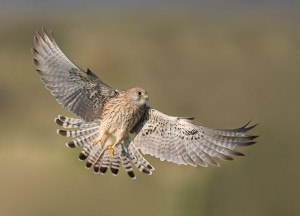
The decline of Lesser Kestrel (Falco naumanni) population was brought to the attention of the raptor world in the early 1990s. Information available showed declines of around 46% since the 1950s in their breeding grounds and of around 25% in their wintering areas. Very little information was available at the time on the numbers and biology of these birds from their wintering grounds. The Migrating Kestrel Project (MKP) was established in 1995 by the Endangered Wildlife Trust specifically to address theses issues in their wintering grounds.
The aims of the project are to:
- Count kestrels in a co-ordinated manner at as many roosts as possible to estimate the global population size.
- Identify and address any conservation threats such as mortality at roost sites, roost destruction, road mortalities, change in land-use patterns and poisoning.
- Create an awareness of the conservation issues that migrating kestrels face by publishing the information in scientific and popular media and collaborating with other conservation organizations around the world.
- Further our knowledge on the biology and migration of these kestrels in Africa.
This project is unique compared to other raptor projects in the region because the information is collected by a large group of volunteers across southern Africa. This has enabled the project to count more roosts in a co-ordinated manner than possible by any single observer or organization, resulting in a much better understanding of the number of kestrels present in the region.
The Lesser Kestrel, however, is not the only small falcon that migrates to South Africa. Amur Falcon (Falco amurensis) and Red-footed Falcons (Falco vespertinus) often form mixed flocks at the roost with Lesser Kestrels and in 2002, the MKP included these two small falcons as part of the project. This initiative is now paying off as the Red-footed Falcon IUCN red list status has subsequently been changed to Near Threatened. Thanks to the MKP, we know a little more about these birds in their wintering area than we did 10 years ago.
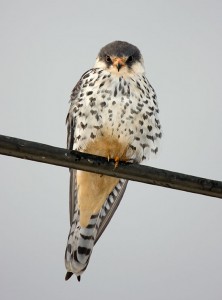
The Amur Falcon has very similar biology to both the Lesser Kestrel and Red-footed Falcon, but because it breeds in a large part of the world which is not well monitored by ornithologists, its conservation status is uncertain. It is currently is categorized as Least Concern. This falcon is particularly interesting because is flies about 13,000 km from China to South Africa, most probably crossing the sea between India and Africa, in the boreal autumn and then flies the same distance back using a different route at the end of the austral summer. This 26,000 km journey is one of the longest migrations of any bird.
Counts of the Amur Falcon were low in the early part of the project but a trend has developed in the last few years, giving an insight into the population of these species. While current estimates in the literature and by Birdlife are in the region of 100,000 to 1,000,000 birds, the MKP has only been counting between 40,000 and 60,000 birds per season. These numbers equate to about 2,000 birds per roost site. These low numbers appear to be a reason for concern, considering that the bulk of the population comes to southern Africa and are well short of the published estimated population size. If the ecology of the Amur Falcon is similar to the Lesser Kestrel and Red-footed Falcon, both which are listed on the IUCN Red List, there may be little reason NOT to list the Amur Falcon as well. Currently Amur Falcon population estimates are guesses based on the size of their breeding range with little other supporting information.
The 2008/9 season in South Africa produced new information on the Amur Falcon global population which changed the population trend. There appeared to be a large influx of birds into South Africa and the annual population count doubled from 55,000 in the 2007/8 season to around 110,000 Amur Falcons in the 2008/9 season. This increase in numbers was supported by the observations of many birders in South Africa, as well as the results of the SABAP2 atlas project. The average roost size also went up from the average 2,000 birds per roost to well over 3,000.
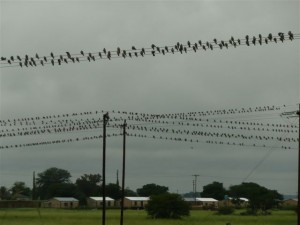
This leaves us with the question, does the bulk of the population come to South Africa or to most of them over winter in neighbouring countries that are not well covered by the MKP? It is possible that in some seasons, much of the population does not reach South Africa, but stops their journey early. This would result in low population estimates in South Africa in some years, but in years when they come further south, increase in the population counts. Or, are we seeing the results of a bumper breeding year for Amur Falcons with resulting increase in numbers? Ultimately, the answers to these questions will determine if the Amur Falcon status should be elevated from the current Least Concern.
The Migrating Kestrel Project is well poised to answer these questions as the volunteers count the roosts across the country each year. A better understanding of the populations of all three species will also be gained with greater participation in the project from other countries in the countries south of the equator, as well as those on the migration routes of these amazing small falcons.
Anthony van Zyl, Birds of Prey Working Group, Endangered Wildlife Trust, Johannesburg, South Africa
Email: anthony@kestreling.com

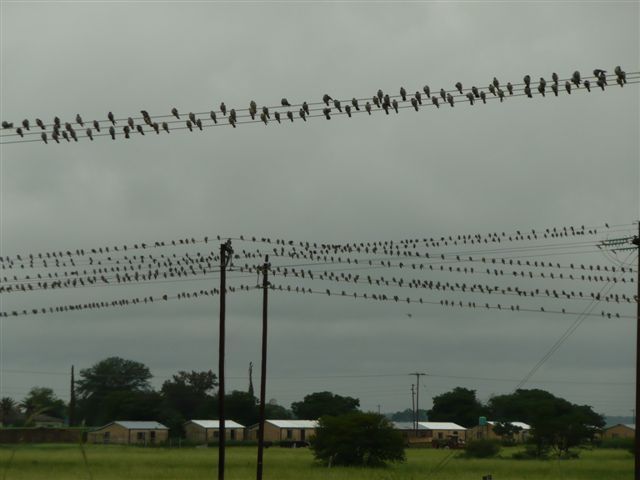
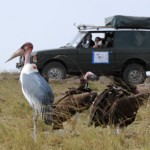
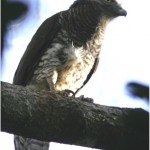

Hi, I have just come back from Nagaland in north east India and saw flocks of Amur Falcons migrating, an amazing sight.
A serious problem however is the extent that they are hunted and shot or trapped in Nagaland, especially in an area called Wokha.
Under pressure from local environmentalists, I think it was the Green Group of Wokha, the police raided a market in Wokha and released around 1,000 amur falcons. If you consider the number sold away from the market, sold there on different days or different places, then it is clear there is a serious issue.
Hunting wildlife and birds is a way of life in Nagaland and there is far less bird life there than there should be. The Green Group are to be congratulated for their brave stance but I would expect are an isolated group and the migrants are being decimated.
Hi
We have thousands of Amur falcons coming to Dordrecht, Eatern Cape, South Africa. They’ve started arriving with us now in December 2011. It’s fascinating to watch them! Thanks for your blog – it’s great
Hello Everyone !
I am from Nagaland, India, and this year too, we have spotted millions of Amur Falcons in Wokha, Mokokchung and Zunheboto districts of Nagaland.
They will stay here for another month feasting till they are fat enough to start their voyage.
Its really a terrific sight, yet the sad picture is the lack of conservation awareness from local populace who kill and trap thousands of birds everyday both for domestic consumption and commercial purpose.
The Green Foundation, a local environmental group, has been working steadfastly for its conservation and in the past the district administration has also issued a blanket ban on shooting, killing and trapping of such migratory birds. Still the birds are being killed in thousands in several villages where it is difficult for the law enforcers to enforce the law.
Yet we are not giving up, we are also trying our best to spread awareness to the local populace for its conservation. Kindly spread the word not to kill amur falcons. They really beautify our mother earth.
N Janbemo Humtsoe,
Director,
Green Foundation, Wokha.
Post box No. 171.
Wokha. Nagaland, India. 797111.